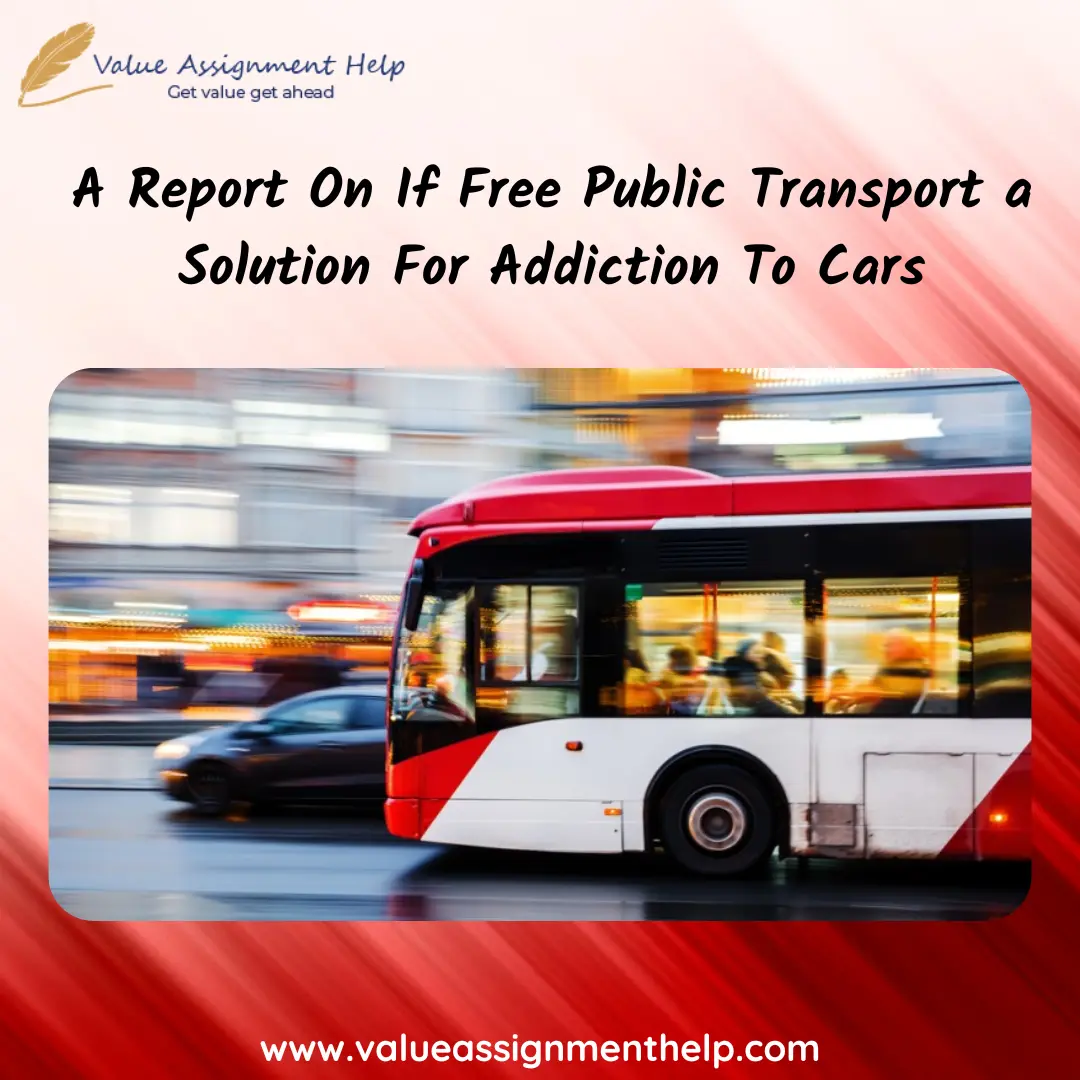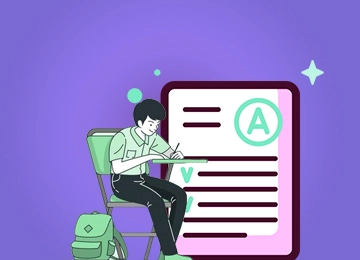
Search Assignments
Table of Contents
Our Experts

Search Assignments

Customers Reviews
Just like cigarettes, cars are addictive. These horseless carriages shackle you in a haven and make you a contributor to inevitable environmental catastrophe. It just came in yesterday; we are now a minute and a half away from never-ending midnight, symbolic of the time left for global doomsday ahead. As revealed by Atomic Science Organisation, the prime cause is the war in Ukraine and the climate shift. However, the alarming rise in the number of vehicles is the key to the holocaust, which, like a beast, is knocking on the doors loudly, waiting to be unleashed.

( Value assignment helps sample assignment papers are helping a lot of studenst in their classwork and essay writing)
As of 2022, there were around 1.45 Billion vehicles in the world. Considering one person might own multiple public transport vehicles, it aggregates to one in every ten people in the world owning a car. But these cars do not run in counties with choking populations, such as China and India, but cramp some lesser-known nations. For instance, the world's fifth smallest country, San Marino, has 1,300 vehicles per 1000 inhabitants. In China, the world's most populous and third largest country by area, 221 vehicles run for 1000 inhabitants. The number in India is even smaller, at 59 vehicles per 1000 people.
So, enslavement to cars is not distributed evenly worldwide, and most of the numbers come from European nations. But the urge to own a car is evident in the behaviour showcased by Pakistan, for instance.
Pakistan is indebted to USD 274 Billion, amounting to 97 per cent of its GDP. But, in the past six months, it preferred to spend over 1.2 Billion dollars on the import of luxury vehicles, electric cars and parts of transport vehicles. Even more shockingly, the nation preferred to import 2200 luxurious vehicles over strike essential items such as medicines and foods at its ports. Priorities set straight.
And not only in Pakistan, but the feeling of exclusivity in owning a car is also unparalleled worldwide. That is why delving into the neighbour of Pakistan, Afghanistan is also pouring money like water into research and development of cars. Not to mention even when 97% of its population is on the brink of poverty. The release of its first indigenous supercar, "Mada 9", just two weeks earlier confirms the compulsion to invest in the arena.
Economic constraints of the particular nation might impact the type of car bought, but hunger to own a car is mutual in every nation. It is very evident from the behaviour patterns of Pakistan and Afghanistan,
Let us make it clear; we are not against investments in automobile sector development. That is the catalyst for revenue generation for any economy. But, the arena of investment is what makes the difference!
Pinpointing the proper investment arena is a little tricky since driving forces for automobile investments can vary depending on each nation's economic conditions, goals, and priorities. Still, for the most part, everyone understands the kind of sword hanging over our heads- a threat to the survival of humankind.
So, every decision, every investment and every priority shall move us a step farther from extinction. For example, investment in electric vehicles is better than in fossil-fuel-driven cars. Still, the solution does not hold well if the prime electricity source for the generation comes from fossil fuels.
Similarly, another impactful solution might be free public transport, which will not drive people out of their vehicles, as described by the study, but will lay the foundation for "car-addiction-rehab".
Pileing on the same thought, a few nations and cities have pondered the thought and implemented "free-public transport".
In Spain, it is free to travel by train till the end of 2023. This governmental scheme targets "ditching personal vehicles", encouraging people to opt for public transportation. The policy prototype began in September 2022 for four months, but after delving into success, the scheme was extended till the end of this year. The country's Minister of Finance, María Jesús Montero, has pledged 700 million euros to support the action this year.
"We will combat the issue of escalating CO2 emissions in the country, and this scheme will take us there", she stated. As of 2021, Spain produced 245 million cubic metric tons of CO2, which deviated the nation from achieving continuous deaccelerating carbon levels since 2016. (image). The scheme is further introduced to strike travel expenses off the shoulders of people facing the cost of living crises in the country. But is it possible to have free public transport for everyone, everywhere?
The Spanish scheme is inspired by Germany, where free public transport costs 9 pounds via a travel pass for unlimited travel. Pattering citizens amid cost of living crises in the country, it was introduced in June 2022 for three months. However, the scheme has been a mere hit, with just a 10% rise in passenger levels and 25% more passengers travelling on specific routes. And hence, just as the need for raincoats ended in Berlin, so did the pass's validity.
Free transportation service is not void of the issues such as pre-booking and over-booking since there would be no cancellation charges. For example, during the initial days of the scheme in Germany, trains were pre-booked 7-10 days before the journey. While, in reality, trains were travelling half-empty. So, it comes with its own set of challenges.( Our experts section helps to build contents and articles that helps drafting of key assignments for college homework)
Although the scheme could not do well in Germany, the first country to introduce free public transportation country-wide, Luxembourg, is still standing by its decision since 2020. Almost three years have gone by, and the foundation of free public transportation stands strong, other than in first class.
The nation enjoys the luxury of the highest per capita income in any independent state. Hence, this tiny nation has one luxury car for every 13 citizens, much higher than the United Kingdom or Canada, where the density of one luxury car is 40 and 53.
By 2019, more than 60% of the residents used personal vehicles to commute to work, while a mere 19% used public transportation; nearly one in five commuters used public transport.
The number of car sales in the year 2019 peaked all time of 9.2% compared to 2018. In march 2020, the scheme was launched. Although the pandemic influenced the dip in sales, in April 2020, only 429 new vehicles were registered compared to the average registration of 1934 vehicles every year since 1991. By the end of 2022, the average new vehicle registration stood at 1259 units, far below the average.
Green Party member Francois Bausch, who is Luxembourg's Minister for Mobility and Public Works, believes that "the policy is well in place, and we should not burden car owners until we have strong alternatives for cars."
And to delve into that dream, the country is set to embark on seven new lines by 2030 and 14 new rail improvements by 2035, along with introducing carpooling lanes on main roads.
Although the scheme's impacts are not entirely evident in Luxembourg, can other countries spare cash to accommodate the policy?
Undoubtedly, road transportation takes a toll on the environment, making tenths of global carbon emissions. But, other than that, soaring fuel prices take a toll on already dipping economies.
While Malta has already jumped on the free-transportation ride, there are not many that have been able to implement the scheme nationwide. But, free bus transit has emerged in all cities and nations. From Rome, I experimented with it in 1971 to Tallinn, the capital of Estonia, which has had free transit ever since 2013.
Similarly, free transportation services for five weeks amid cost of living crises have been deemed a success in Australia. Still, since free commuting is a luxury in urban cities, researchers claim that further stretching the scheme will only benefit urban, wealthy populations.
In another opinion, each bus driver is accompanied by a conductor in countries such as India, Pakistan and Bangladesh. Although sparse in Europe, the trend of accompanying a driver with a conductor is still followed in many Asian nations. If free-public transport is implemented, it would directly cut thousands of jobs, making the entire profession a thing of the past.
While luring people with free public transport will not directly shrink their fondness for cars, it is, undoubtedly, the right piece of the giant puzzle. To reduce the fondness, driving a personal vehicle shall be rugged; instead, we are doing the opposite—redundation of fuels, hefty investments in massive road construction projects, and whatnot.
It is high time that we understand the importance of our minute changes. For example, switching from car to bus might be a tough choice, but it is correct!




No Comments